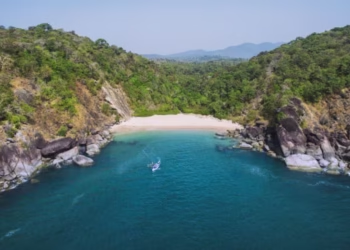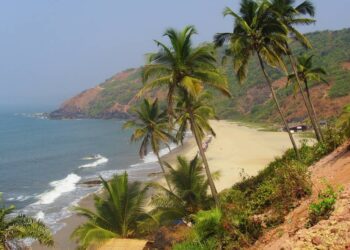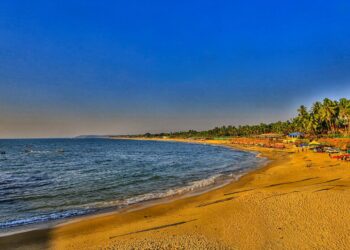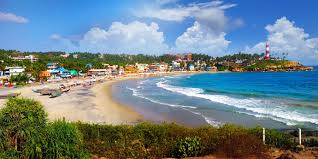Modhera Sun Temple is an ancient shrine dedicated to Lord Surya, the sun god located in the quiet village of Modhera, near Mehsana in Gujarat. Built in the 11th century by Solanki king Bhima I, this temple, with its stunning carvings and unique stepwell, draws devotees and travelers to its holy grounds. If you want to visit this special place, here’s a plain guide about its story, what it looks like, its rituals, and how to get there.
Fun Fact: The temple is built so that sunlight falls on the Surya idol during the equinoxes, lighting up the sanctum.
Mythological Importance
Modhera Sun Temple holds old tales. One story says Lord Surya blessed the Solanki kings, who built this shrine to honor him. Another tale tells of a sage praying here, seeking Surya’s light to heal the land. Locals believe visiting the temple brings health and energy, as Surya is the source of life. As a key sun temple, it’s tied to the god’s power to drive away darkness and grant vitality.
Historical Overview
The temple was built in 1026 CE by Solanki king Bhima I, a time when Gujarat was a rich land. Modhera was a holy spot, with sun worship going back centuries. Stone writings from 1027 CE near the temple mark its start. In the 12th century, Solanki rulers added the stepwell. Muslim invasions in the 13th century damaged it, but the structure stood strong. By the 1800s, British travelers wrote about its beauty. After 1947, India’s government took over. The Archaeological Survey of India now cares for it. In 1980, repairs kept its old look. Sages and poets from Gujarat’s past sang of Surya, spreading the temple’s name. Today, it calls thousands to Mehsana’s sacred fields.
The temple’s past is deep. Old texts from the Solanki era mention sun shrines. British records from the 1900s call it a wonder. Recent finds of pottery from 1000 CE show its age.
Architecture of Modhera Sun Temple
Modhera Sun Temple, on 10 acres by the Pushpavati River, glows in Solanki-style architecture. The main shrine, from 1026 CE, has a curved shikhara with carvings of Surya on his chariot, pulled by seven horses, all in sandstone. The sanctum, now empty, once held a gold Surya idol, lit by sunrays during equinoxes. The sanctum’s walls have faded carvings of Surya’s tales, glowing under soft light.
The temple has a sabha mandapa with 52 pillars, each carved with gods and dancers. A stepwell, called Surya Kund, sits in front, with 108 mini shrines in its steps, made of sandstone. Smaller shrines for Vishnu, Ganesha, and Durga are in the complex. The Vishnu shrine shows him with a conch, for protection. The Ganesha shrine, from 1100 CE, has him with a modak, for wisdom. The Durga shrine depicts her with a lion, for strength. The grounds, with stone paths, feel holy, shaded by mango trees. Low walls have carvings of sun symbols, said to guard the site. Pillars show Surya’s journey across the sky, teaching visitors. The stepwell’s geometric steps are a marvel, used for holy dips.
Rituals and Festivals
The temple shines with festivals, though it’s no longer active for daily worship. The Modhera Dance Festival, in January, is biggest, with Bharatanatyam and Kathak dancers honoring Surya in the sabha mandapa. Suryastami, in February, brings devotees for sun prayers by the stepwell. Ratha Saptami, in January or February, celebrates Surya’s chariot with lamp offerings. Chhath Puja, in November, sees pilgrims from nearby pray at the Surya Kund. Makar Sankranti, in January, has kite-flying near the temple.
Since the sanctum is empty, no daily rituals happen, but priests hold special pujas during festivals, like Surya Homam, costing ₹100-300, for health. A stall gives free jaggery as prasad. Sunday prayers, with marigold flowers, seek Surya’s blessings.
During the dance festival, music fills the air with joy. The Surya Kund, believed to heal, gets busy with devotees during festivals, dipping in faith.
Information for Travelers
Hours and Entry: Open daily, 7:00 AM to 6:00 PM. Entry costs ₹40 for Indians, ₹200 for foreigners. Photos are okay everywhere.
Clothing: Wear clothes that cover shoulders and knees. For pujas, men wear kurtas, women wear sarees or suits.
How to Get There:
Air: Ahmedabad Airport, 100 km away, is closest. Taxis take 2 hours, ₹2000-3000.
Train: Mehsana Railway Station, 30 km away, links to Ahmedabad (1 hour) or Delhi (12 hours). Autos cost ₹200-300.
Road: Buses from Ahmedabad (2 hours) or Patan (1 hour) reach Modhera. Taxis cost ₹1000-1500. The drive is calm.
Places to Stay: Modhera has basic guesthouses like Hotel Surya (₹800-1500). Mehsana, 30 km away, has hotels like Grand Midori (₹2000-3000). Stalls sell khaman, fafda, and tea.
Best Time to Visit: October to March is cool, 20-30°C. Weekdays are quiet. The dance festival is busy, so book early.
Nearby Attractions:
Rani ki Vav, 40 km away, is a UNESCO stepwell.
Patan Patola Heritage, 45 km away, shows silk weaving.
Vadnagar Tana-Riri, 60 km away, is a music shrine.
Siddhpur Bindu Sarovar, 50 km away, is a holy lake.
Becharaji Bahuchar Mata Temple, 35 km away, is a Devi shrine.











